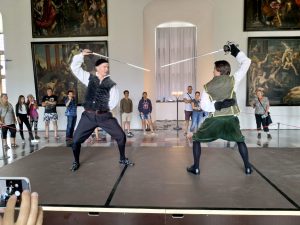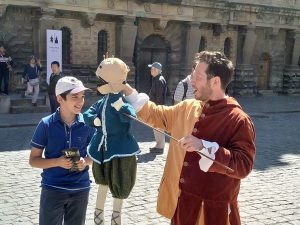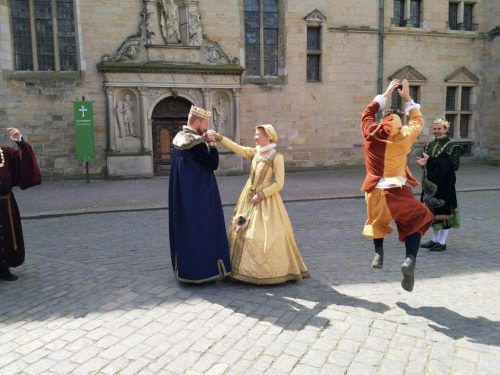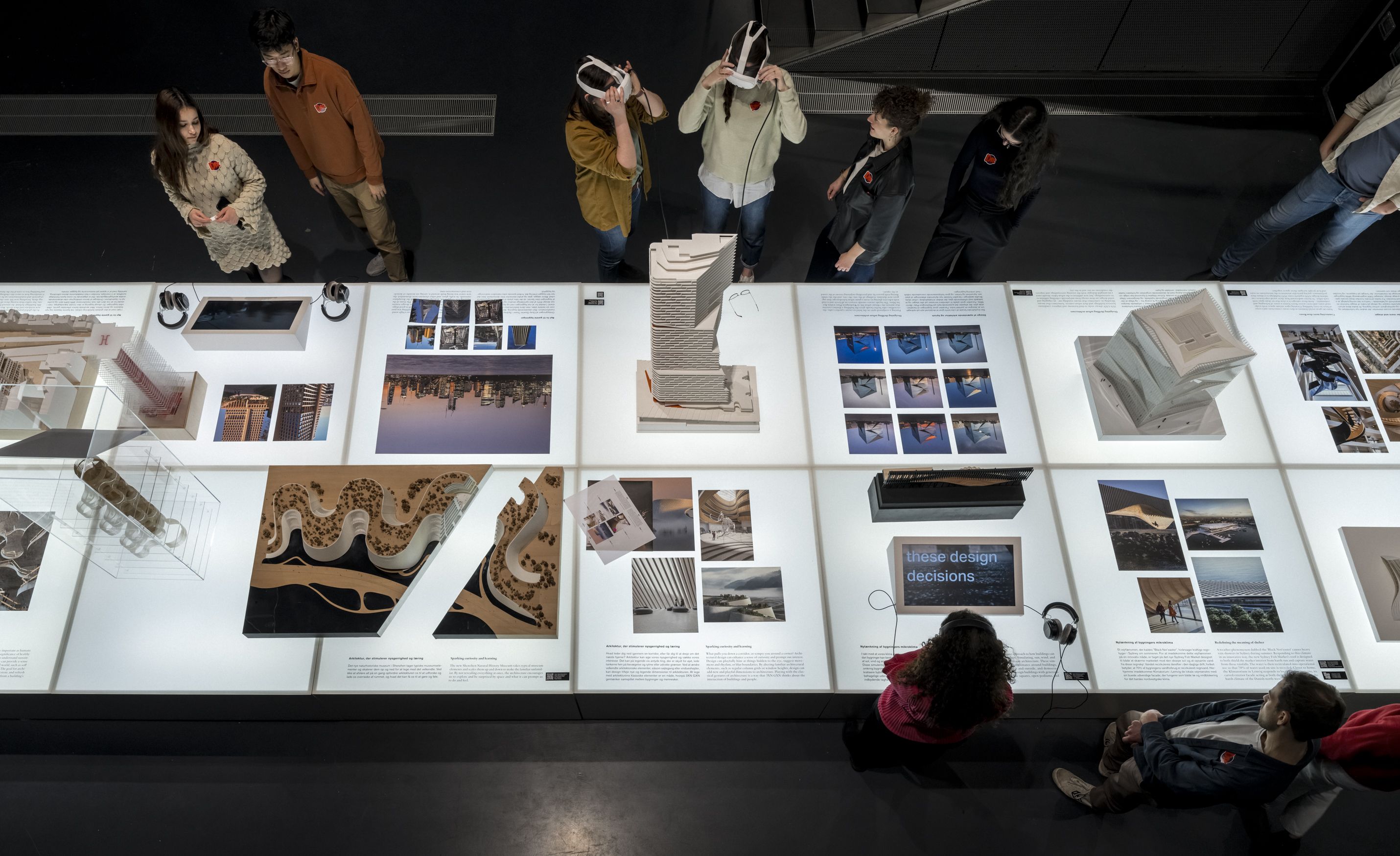This week marks the start of Copenhagen Stage, with the capital offering a wide variety of theatre productions in both Danish and English (see cphpost.dk for details of 49 productions accessible to internationals). The festival will highlight the best of Danish contemporary theatre over its 10-day run.
But another production is running concurrently with the festival that offers visitors a unique take on an old classic.
‘Hamlet Live’ is an immersive, interactive take on Shakespeare’s tragedy, performed at Kronborg Castle in Helsingør, the inspiration for Hamlet’s Elsinore. Masterminded by Peter Holst-Beck and Barry McKenna, the production is being shown for the third straight year.
Historical fiction
‘Hamlet Live’ strives to bring a distinctive experience to its audience, blending Danish medieval history with elements from ‘Hamlet’. The performance largely ignores a traditional performance structure, with scenes taking place all over the castle, and many at the same time.
The actors are given lots of freedom to improvise and interact with visitors, providing everyone with their own unique experience of the ‘Hamlet’ story.
Shakespeare’s tragedy is not the only focus of the performance, which seeks to portray what life was like in feudal Denmark. As visitors advance through the castle and see different scenes, they are also being introduced to a part of Danish history.
Promotes English theatre
Holst-Beck and McKenna are both veterans of the theatre scene in Denmark, having worked on a number of different productions in both Danish and English.
English language productions are often a tough sell in Denmark, with many finding difficulties obtaining both funding and recognition. ‘Hamlet Live’ therefore serves as an excellent example that English language productions can be just as exciting and relevant to society as their Danish language counterparts.

CPHPOST: Why start Hamlet Live?
PHB: Well, we had this 400-year celebration of Shakespeare in 2016, and the castle wanted to make Shakespeare and history available. They wanted to make a fictional story into a historical museum. Could that be done? We discussed it and I said of course we can do it. Everything in it is historically-based. We still have this gruesome story of this dysfunctional family, but there are scenes that show how things worked on a daily basis back then. So, we wrote the concept in 2016 with that in mind – involving people, wanting them to interact and ask questions themselves, to gain knowledge. The scenes we do take place in the actual places where Shakespeare imagined them when writing. So, it’s really a new way of making museums come alive.
BM: Peter was the brains behind ‘Korsbækbyen at Bakken’. That was Peter’s concept, so the national museum contacted Peter and said: “You’ve got a great idea there − we would like a similar thing here.” Nobody knew Kronborg, nor Helsingør nor Elsinore, but they always asked: “Is this Hamlet’s castle?”
CPHPOST: How has Hamlet Live changed through the years?
PHB: The cast is bigger now. We have Yorick now as the jester, which we didn’t have the first year. This year we have archery as well, and lots of recreational activities, so guests can try some archery and games. It really is an interactive, 360-degree experience. Things are happening everywhere, and the guests can put their Hamlet experience together themselves.
CPHPOST: How do the visitors know how to experience the performance?
BM: We have a blackboard and we have castle hosts who work here every day to make sure people can find the right places to be, and we have a herald who announces things, or you can just go up to him or her and ask. So, you don’t actually have it in a brochure because it’s so changeable that we didn’t want to print anything up. But we do have brochures for people to see what the concept is and who they can meet, with a basic synopsis of what happens during the tour. But again, that’s not the purpose of it: to come in and see Shakespeare’s ‘Hamlet’. You’re seeing people who live here, and we make reference and homage to Shakespeare.
PHB: Everything has been rewritten. Everything is in modern English, so most people can understand.
BM: We’re trying to be clear to people from at least 92 different countries, and even if they can’t speak English at all, they get something out of it. Shakespeare has written a play that is set in this castle, so you see Polonius stabbed to death in the queen’s chamber, which is where it happens in the play.
CPHPOST: Why did you decide to make this an interactive performance?
BM: You’re playing in all these wonderful spaces and not making theatre as much as providing a 360-degree experience, and to do that this year we have added scenarios that we call ‘slices of life’. When Laertes is about to go on a sea voyage, he is packing his suitcase and asking what the audience would take on a long trip because he’s going off to study. So, we have things that people nowadays can relate to. It’s really involving people – and even more so physically with the archery. You can learn to make a quill pen, you can learn to write in a Renaissance style. It’s really a family attraction. For everyone: Danes, Swedes, Americans, Koreans.
PHB: We get a lot of Chinese people coming here so we had special lessons on how to work with Chinese tourists. All the actors have to learn specific Chinese words to say hello and goodbye and so on.

CPHPOST: How long do the performances generally last?
BM: It’s the whole day. There are photo opportunities by the fountain. Japanese and Chinese buses carrying the tourists come, and they take photographs and we interact with them. That’s from 10 o’clock and then from 10:40 the actual story begins to be told. Then we have a coronation scene where the king and queen come to greet their people on the podium out there. Gradually, you go through the royal apartments and you experience meeting the king and queen. Suddenly there might be a scene in which they portray something from the play or you just chat with them and they’ll ask you where you’ve come from − to which we have to respond to and deal with people as if we are living in the 16th century.
CPHPOST: What does the future hold for Hamlet Live?
BM: It’s really grown. This year we are bringing in more props and furniture, and we’ve altered the costumes quite radically. I’ve always wanted a marketplace out there. I want horses and a blacksmith. I see a good future in this and I can see it fleshing itself out if we become more and more successful financially. Although, whatever we earn belongs to the government. But it would be nice to have even more characters: to have a Horatio, to have proper servants. It’s all built around the story, so the characters’ background is very much grounded in ‘Hamlet’, but our everyday lives are based on the court life of Frederik II and Queen Sophie. So, this year we are trying to marry that. We’ve been inspired somewhat by Hampton Court, where Peter and I went for a business trip.
CPHPOST: What’s your experience working in English language theatre in Denmark?
BM: I’ve worked with English theatre since I came here. I’ve worked for Vivienne McKee, I’ve worked on some independent plays. My major experiences have been with Ian Burns at That Theatre, for whom I’ve done 12 productions through the years, maybe more. And then Sue Hansen-Styles, who runs Why Not Theatre – I’ve done several productions for her. I think we are very much on the periphery of the Danish theatre scene.
CPHPOST: What do you think about English language productions not having the same access to funding as Danish productions?
BM: Well I really think is it is a lottery and I’m just finding out myself about how to go about it, because I’ve got plans to do a Danish production of an English play with Rasmus [Mortensen, one of the actors playing Claudius] through Stuart Lynch, who runs the Copenhagen Film and Theatre School. I feel that we have to make more of an effort if we want to be taken seriously when we apply for funding, as there’s some very set ideas and rules you have to follow, and if we deviate from that, we don’t get funded. But we are, I think, perhaps marginalised by the state because it’s not necessarily seen as, maybe wrongly, necessary for Danish culture or for kids, which I think is wrong because obviously, I, Ian and Sue have a network where people plead with us − teachers and people in education − and we often go to them and bounce ideas off them to see what would be the right kind of production for people.
CPHPOST: What are the biggest hurdles in staging English language productions in Denmark?
BM: I think because we are not a huge organisation at That Theatre, we just settled for two productions a year, and that’s very doable and maybe the audience for this kind of theatre. But when we do our productions we get fantastic reviews and fantastic feedback from our audiences. But maybe we are on the fringe, and maybe that’s enough because we are able to fulfil our art and that’s how we all feel. I mean we all do other things – we can’t possibly rely on those productions. I don’t know what to say because we are a peculiar commodity and Danish theatre is in a sense very closed in on itself.
CPHPOST: Does theatre in Denmark lack originality?
BM: I think there is when you see that they are restaging Chaplin’s masterpiece ‘The Great Dictator’ – what’s that about? I find it a bit tedious, and this happens in London, I’m sure, that they will stage a film. You know, put a film on stage and it’s like why? You’ve got the film and that’s an art form in itself. It’s like doing ‘Grease’ over and over again and doing ‘Phantom of the Opera’ over and over again. I don’t know really because the experimental theatre I’ve worked in on the Danish side is Teater Republique, where I worked on ‘Bollywood Trip’ and also wrote an original play based on ‘Othello’ called ‘Iago: An Eye for an Eye’. What I’ve seen here in Danish theatre is that they prefer the absurd: the off-the-wall rather than the traditional type. So if they are doing ‘Miss Julie’, they will do it in flying gear. It tends to be gimmicky, so I was one of the few people who hated ‘Hamlet’ at Skuespillhuset with Nicolas Bro. There were so many gimmicks going on that they ran out of gimmicks. Horatio is a six-foot stuffed pink rabbit. Why do they have a game show at the end when they have the fencing? It’s like the director was unable to make his mind up so let’s do all four. So that kind of thing irritates me, but that’s just my personal hang-up really. I would much rather see beautifully produced things: new and inspiring productions with ideas. But I don’t know … those are just my ramblings.













